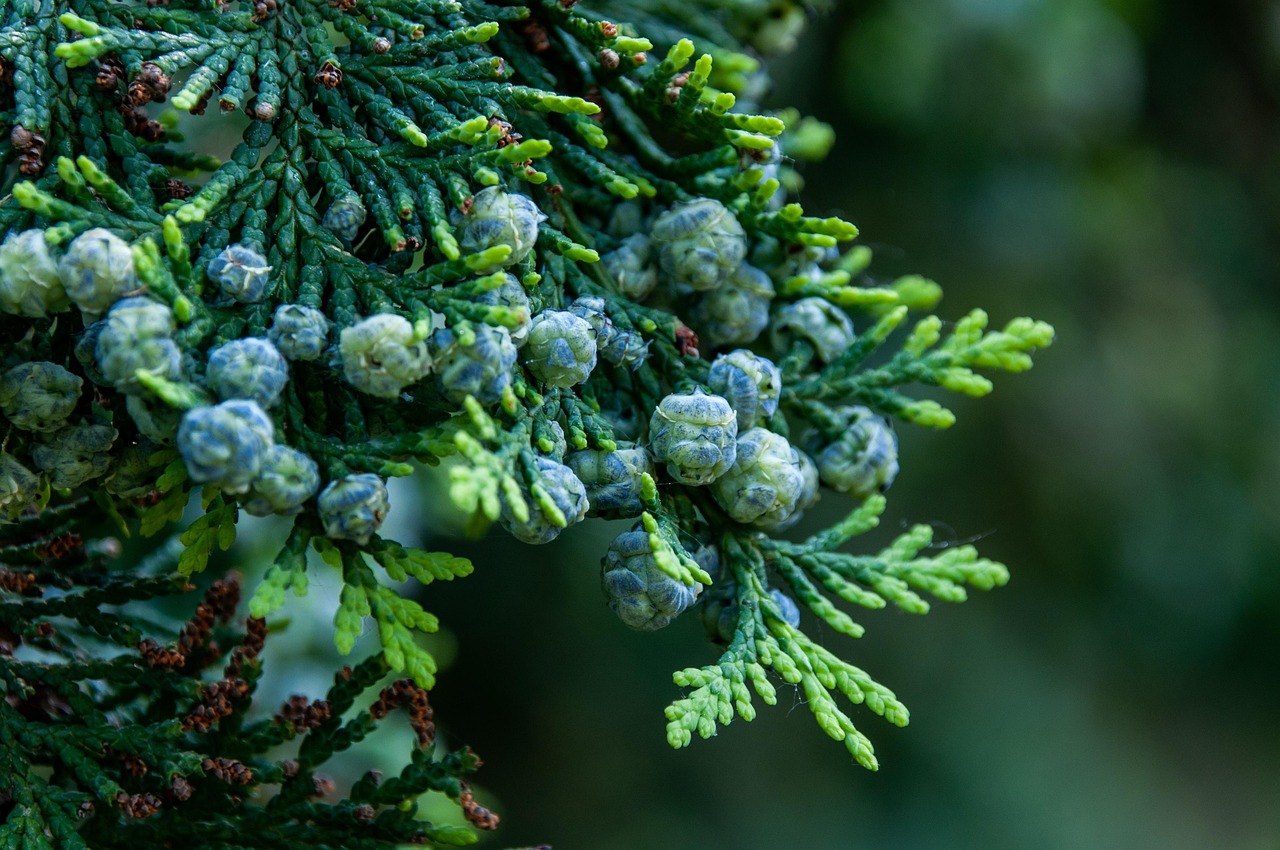Proper pruning is essential to keep Italian cypress trees healthy, dense, and visually striking. This guide offers practical tips on the best timing, techniques, and tools to enhance growth, prevent disease, and shape your trees effectively. Regular maintenance ensures these iconic evergreens thrive beautifully in your landscape year-round.
Italian cypress trees (Cupressus sempervirens) are known for their tall, narrow form and striking appearance. These columnar evergreens are often used in landscaping as focal points or privacy screens. They thrive in well-drained soil and prefer full sunlight, making them ideal for various climates, especially in Mediterranean regions. However, to keep these trees looking their best, regular pruning is necessary.

Pruning these trees not only enhances their aesthetic appeal but also prevents diseases and pests. When properly maintained, Italian cypress trees can live for many years and remain vibrant. Understanding when and how to prune them is key to achieving the desired results.
Understanding the Importance of Pruning
Pruning is a critical practice for Italian cypress trees for several reasons:
- Health: Removing dead or diseased branches helps prevent the spread of illness through the tree.
- Shape: Regular pruning maintains the characteristic columnar shape of these trees, preventing them from becoming too wide or unruly.
- Growth: Pruning encourages new growth and denser foliage, enhancing the tree’s overall appearance.
- Light Penetration: Thinning out branches allows more light to reach the inner parts of the tree, promoting healthy growth.
The best time to prune Italian cypress trees is during late winter or early spring before new growth begins. This timing minimizes stress on the tree and allows it to heal quickly. However, light pruning can be done throughout the year to maintain shape and remove any dead branches.

Pro-Tips from Personal Experience
- When I first started pruning Italian cypress, I was tempted to shape them into perfect cones, but I learned that minimalistic, natural cuts promote better health. Always cut just above a lateral branch or bud.
- Initially, I used dull tools for pruning, which caused tearing of the branches. After switching to sharp, clean tools, I noticed cleaner cuts that healed faster and reduced disease risk.
- I used to prune in the middle of summer, which stressed the trees. Now, I strictly prune during late winter or early spring—this timing helps minimize stress and encourages vigorous new growth.
- When I overpruned early on, I noticed browning and weak foliage. Now, I limit each session to removing no more than 25% of foliage to keep the tree healthy and strong.
- I’ve found that cleaning my pruning tools with alcohol or bleach between cuts prevents spreading pests and diseases, saving me trouble down the line.
- Leaving some dead or damaged branches rather than removing all of them at once helps the tree stay balanced and avoids unnecessary stress.
- When I first attempted crown reduction, I cut too many branches at once. Now, I do it gradually over multiple seasons to allow natural growth and recovery.
- During winter, I used to ignore protecting my trees from frost, but I learned that wrapping the base in burlap really helps prevent cold damage in colder zones.
- After pruning, I always water my trees deeply, especially in dry seasons, to promote healing and strong root development.
- Over time, I realized that regular observation and early intervention for pests or disease make a big difference in keeping my Italian cypress healthy and thriving.
Essential Tools for Pruning
Before starting the pruning process, it is vital to have the right tools on hand. Here are some essential tools for pruning Italian cypress trees:
| Tool | Description | Use |
|---|---|---|
| Hand Pruners | Small, sharp scissors designed for cutting small branches. | Ideal for snipping off dead or damaged twigs. |
| Loppers | Larger tools with long handles for cutting thicker branches. | Useful for reaching higher areas of the tree. |
| Saw | A pruning saw is effective for larger branches. | Necessary for cutting branches that are too thick for pruners or loppers. |
| Gloves | Protective gloves to safeguard your hands. | Helps prevent injuries while handling tools and branches. |
| Lopper with Rotating Handle | Specialized tool that makes it easier to prune at different angles. | Provides better control when reaching awkward angles. |
Pruning Techniques for Italian Cypress Trees
When pruning Italian cypress trees, specific techniques yield the best results. Here are some effective methods:
Thinning Cuts
This technique involves removing entire branches at their point of origin. Thinning cuts improve air circulation and light penetration throughout the tree. Aim to remove inward-growing branches that crowd the center of the tree.

Heading Cuts
Heading cuts involve shortening branches by cutting them back to a bud or lateral branch. This technique encourages bushier growth and can help maintain the desired height of the tree. Be cautious not to overdo this method as it can lead to excessive branching.
Shearing
For those looking to maintain a formal shape, shearing involves trimming the outer foliage of the tree into a specific shape. While this can create a neat appearance, it should be done minimally to avoid harming the tree’s natural growth pattern.
Caring for your Italian cypress through proper pruning techniques will ensure its longevity and vitality. Regular maintenance will not only enhance its beauty but also promote a healthier landscape overall.

Common Mistakes to Avoid
While pruning is beneficial, certain mistakes can compromise the health of your Italian cypress tree:
- Over-pruning: Removing too much foliage can stress the tree and hinder growth.
- Inappropriate Timing: Pruning at the wrong time can expose the tree to disease and pests.
- Poor Cuts: Making improper cuts can lead to injury and attract pests or disease.
- Lack of Cleaning Tools: Using dirty tools can spread disease among plants.
Avoiding these common mistakes will help ensure that your Italian cypress trees remain healthy and attractive for years to come.
Seasonal Care for Italian Cypress Trees
Understanding the seasonal care needs of Italian cypress trees is important for successful pruning and overall maintenance. Each season brings unique challenges and opportunities for these trees. By tailoring care to the specific requirements of each season, you can promote healthy growth and maintain the tree’s shape.
Spring Care
Spring is a critical time for Italian cypress trees, as this is when new growth begins. Consider the following care steps:
- Inspection: Check for any signs of disease or pests. Look for discoloration, wilted branches, or unusual growth patterns.
- Pruning: Conduct light pruning to remove any dead or damaged branches. This will encourage healthy new growth.
- Fertilizing: Apply a balanced slow-release fertilizer to provide essential nutrients. This supports vigorous spring growth.
- Watering: Ensure the soil is moist but not waterlogged. Newly emerging roots need adequate hydration.
Summer Care
During the summer months, Italian cypress trees require ongoing attention to maintain their health and appearance:
- Pruning Maintenance: Continue with light shaping as needed. Remove any unwanted growth to maintain the desired height and width.
- Watering: Water deeply during dry spells, especially in regions with high temperatures. Deep watering encourages strong root development.
- Pest Monitoring: Keep an eye out for pests such as aphids or spider mites. Early detection is vital for effective control.
- Mulching: Apply a layer of mulch around the base to retain moisture and suppress weeds.
Fall Care
As fall approaches, preparations for winter should begin. Important care steps include:
- Final Pruning: Complete any remaining pruning tasks before the onset of cold weather. This allows the tree to focus on healing before winter.
- Fertilization: If you haven’t fertilized in spring, consider applying a fall fertilizer to help prepare the tree for winter.
- Watering: Continue watering until the ground freezes. This ensures trees are well-hydrated before winter dormancy.
- Pest Prevention: Implement pest control measures if needed to reduce the risk of infestations during winter.
Winter Care
Winter can be harsh for Italian cypress trees, especially in regions with severe cold. Here are some care tips for winter months:
- Protection from Frost: If you live in an area prone to frost, consider wrapping the lower part of the tree with burlap or frost cloth to protect it from freezing temperatures.
- Irrigation Needs: During dry winter months, check soil moisture levels. Water if necessary, especially if there is little precipitation.
- Avoid Pruning: Refrain from pruning during winter, as this can stress the tree. Wait until late winter or early spring.
- Pest Inspection: Inspect for any signs of pests or diseases that may have developed during the dormant period.
Troubleshooting Common Issues
Even with proper care, Italian cypress trees may encounter various issues. Here are some common problems and solutions:
Pest Infestations
Pests can pose a significant threat to Italian cypress trees. Common pests include aphids, spider mites, and scale insects. To manage these pests:
- Regular Monitoring: Inspect your trees regularly for early signs of infestation.
- Natural Predators: Introduce beneficial insects like ladybugs that prey on harmful pests.
- Pesticides: Use insecticidal soap or horticultural oils as a last resort, following manufacturer instructions carefully.
Disease Management
Diseases can affect the health of Italian cypress trees. Common issues include cypress canker and root rot. To address these diseases:
- Cypress Canker: Remove infected branches promptly to prevent spread. Ensure good air circulation around the tree.
- Root Rot: Improve drainage around the tree by adding organic matter to the soil. Avoid overwatering to prevent root rot development.
Environmental Stress
Italian cypress trees may experience environmental stress due to extreme weather conditions or poor soil conditions. Signs of stress might include browning foliage or stunted growth. To mitigate stress:
- Adequate Watering: Ensure proper watering practices, particularly during dry spells.
- Soil Testing: Test soil pH and nutrient levels to determine if amendments are needed.
- Avoid Soil Compaction: Keep heavy equipment away from the root zone to prevent soil compaction.
Caring for Italian cypress trees involves understanding their seasonal needs and identifying common problems. By staying proactive in maintenance and monitoring, you can ensure these elegant trees thrive in your landscape.
Advanced Pruning Techniques for Italian Cypress Trees
For those looking to refine their pruning skills, advanced techniques can enhance the health and appearance of Italian cypress trees. These methods focus on specific growth patterns and structural integrity to ensure that the trees develop robustly while maintaining their iconic shape.
Crown Reduction
Crown reduction is a technique used to decrease the overall height of the tree while maintaining its natural shape. This method is particularly useful for managing trees that have grown too tall or wide for their location:
- Identify Branches: Select branches that are growing vertically and are well-positioned to maintain the tree’s shape.
- Make Cuts: Cut branches back to a lateral branch or bud, ensuring that the cuts are clean and angled properly to encourage new growth.
- Avoid Topping: Never top the tree, as this can lead to weak growth and increased susceptibility to disease.
Selective Thinning
Selective thinning involves removing specific branches to improve air circulation and light penetration. This method not only promotes healthy growth but also enhances the overall aesthetic of the tree:
- Choose Target Branches: Identify crowded or crossing branches that detract from the tree’s appearance.
- Cut at the Source: Remove these branches at their point of origin, ensuring that cuts are made close to the trunk without damaging surrounding tissue.
- Maintain Balance: Ensure that you maintain a balanced structure by not over-thinning one side of the tree.
When to Prune: Timing is Key
The timing of pruning is crucial for the health and growth of Italian cypress trees. Understanding when to perform each type of pruning can lead to better results.
Ideal Pruning Times
The following table outlines the best times for various pruning activities:
| Pruning Type | Best Time | Reason |
|---|---|---|
| Light Pruning | Late Winter to Early Spring | Before new growth begins, minimizing stress and promoting healthy budding. |
| Crown Reduction | Late Winter | Allows for healing before active growing season. |
| Selectively Thinning | Early Spring | Encourages new growth and improves light penetration as trees begin their growth cycle. |
| Maintenance Pruning | Summer Months | To manage shape and remove any dead or damaged branches. |
| Final Pruning Before Winter | Fall | Prepares tree for winter dormancy. |
Avoiding Stress During Pruning
Pruning can be stressful for trees if not done carefully. To minimize stress:
- Limit Amount Removed: Aim to remove no more than 25% of the foliage in one session.
- Avoid Wet Conditions: Prune during dry weather to prevent fungal infections.
- Use Sharp Tools: Ensure that all tools are sharp and clean to make precise cuts.
- Monitor Tree Health: After pruning, keep an eye on the tree’s recovery, and address any signs of distress promptly.
The Role of Fertilization in Pruning Success
Adequate fertilization plays a vital role in the overall health of Italian cypress trees, especially after pruning. Proper nutrients support recovery and promote vigorous new growth:
Choosing the Right Fertilizer
Selecting a balanced fertilizer can enhance the effectiveness of your pruning efforts. Consider the following types:
- Nitrogen-Rich Fertilizers: Promote leafy growth and are beneficial in spring when new growth begins.
- Slow-Release Fertilizers: Provide a steady supply of nutrients over time, reducing the need for frequent applications.
- Organic Options: Compost or well-rotted manure can improve soil structure and provide essential nutrients naturally.
Application Techniques
The method of applying fertilizer can impact its effectiveness:
- Sidedressing: Apply fertilizer in a band around the base of the tree, avoiding direct contact with the trunk.
- Dilution for Liquid Fertilizers: If using liquid fertilizers, dilute as per instructions and apply directly to the soil around the roots.
- Irrigation Integration: Consider integrating fertilizer application with watering to enhance nutrient absorption.
Maintaining Aesthetic Appeal
The Italian cypress is celebrated for its elegant, columnar shape. Maintaining this aesthetic appeal requires ongoing attention beyond just pruning:
Creating Visual Interest
You can further enhance the beauty of your Italian cypress trees through thoughtful landscaping choices:
- Companion Planting: Pairing with lower-growing plants can create a layered look that showcases the height of cypress trees.
- Seasonal Color: Incorporate flowering plants or shrubs nearby to bring seasonal color contrast against the evergreen backdrop.
- Lighting: Install uplighting or spotlights to highlight the trees at night, emphasizing their striking silhouette.
By employing advanced pruning techniques, understanding seasonal care, and integrating fertilization practices, you can ensure that your Italian cypress trees remain healthy, vibrant, and visually appealing throughout their lifespan.
Enhancing the Landscape with Italian Cypress Trees
Italian cypress trees can be more than just a stunning vertical feature in your garden; they can also serve functional purposes. These trees are often used in landscaping to create privacy screens, windbreaks, and elegant borders. They can also enhance the overall design of your outdoor space.
Using Italian Cypress for Privacy Screens
One of the most popular uses for Italian cypress trees is as a natural privacy screen. Their tall, narrow form makes them ideal for creating barriers between properties or shielding outdoor living areas from neighbors:
- Spacing: Plant these trees in a staggered or straight line, depending on the desired density of coverage.
- Height Control: Regular pruning helps maintain the height and shape necessary for effective screening without overwhelming the space.
- Maintenance: Periodic thinning and shaping ensure that the trees do not become too dense or block out too much light.
Windbreaks and Shelterbelts
In addition to privacy, Italian cypress trees can act as effective windbreaks. They help protect other plants and structures from strong winds:
- Placement: Position trees strategically around vulnerable areas such as vegetable gardens or patios.
- Height Variation: Combine with shorter shrubs to create a multi-layered windbreak that offers improved protection.
- Foliage Density: Maintain healthy foliage through regular pruning to ensure effective wind resistance.
Integrating with Other Plants
Italian cypress trees can be beautifully integrated with various plants to create a cohesive landscape design. Consider these combinations:
- Herbaceous Plants: Pair with perennials and ornamental grasses for a lush underplanting effect.
- Flowering Shrubs: Use flowering shrubs like hydrangeas or roses at the base to add bursts of color throughout the seasons.
- Hardscape Elements: Incorporate pathways, stone walls, and benches to complement the vertical lines of the cypress trees.
Final Thoughts
Caring for Italian cypress trees involves a combination of proper pruning techniques, seasonal maintenance, and thoughtful landscape integration. By understanding their growth patterns and environmental needs, you can cultivate these elegant trees into a striking feature of your garden.
The key takeaways from this guide include the importance of timely pruning to promote health and shape, understanding seasonal care requirements to adapt to changing conditions, and employing advanced techniques for aesthetic and structural benefits. Additionally, integrating these trees into your landscape design can enhance both beauty and functionality.
With regular attention and care, your Italian cypress trees will thrive, providing beauty and elegance for many years to come. Whether used for privacy, windbreaks, or as part of a larger landscape design, they are a valuable addition that can transform any outdoor space.
As you embark on your journey with Italian cypress trees, remember that patience and observation are crucial. Each tree is unique, and understanding its specific needs will lead to a successful and rewarding gardening experience. Happy gardening!
